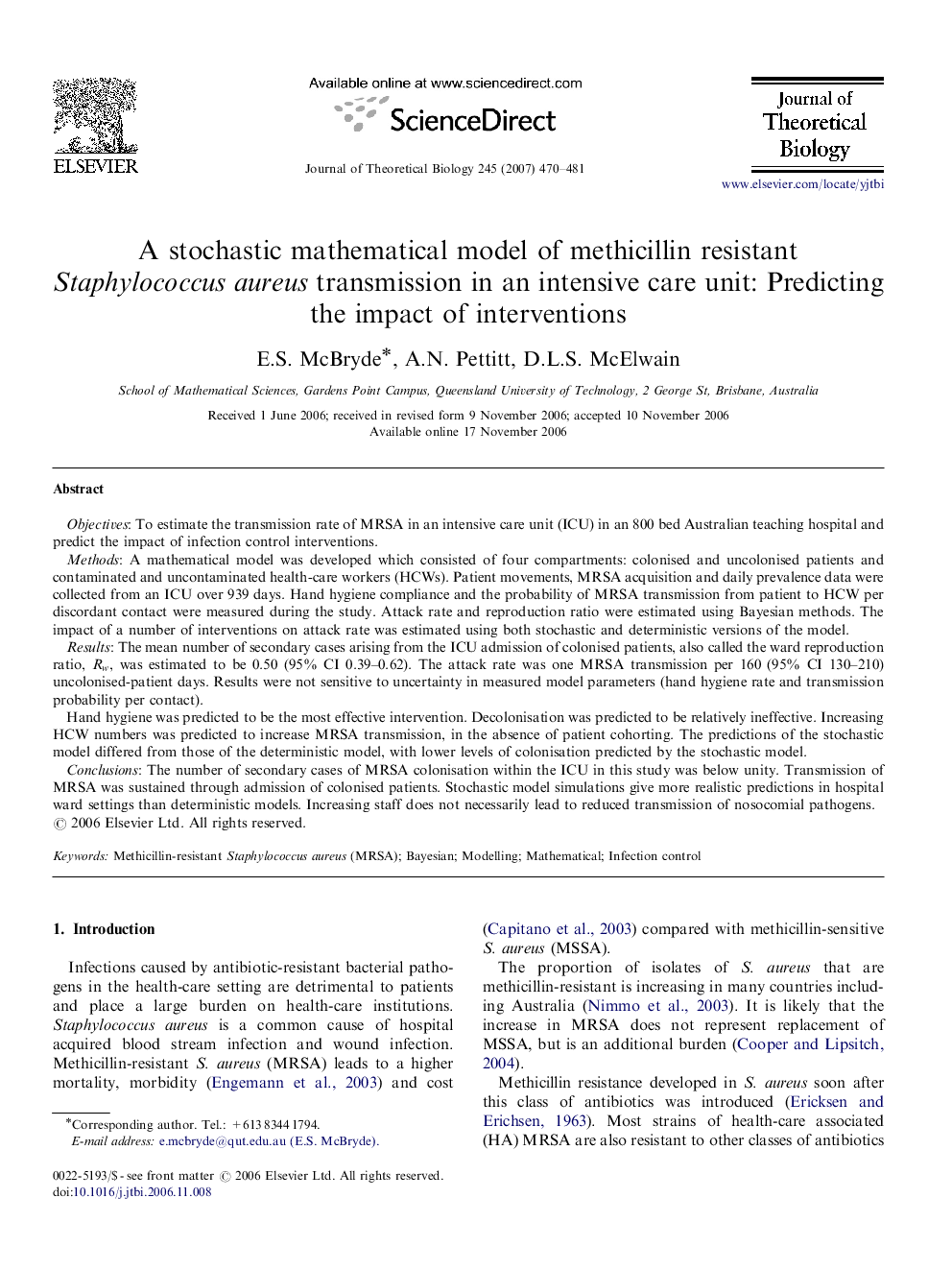| Article ID | Journal | Published Year | Pages | File Type |
|---|---|---|---|---|
| 4499101 | Journal of Theoretical Biology | 2007 | 12 Pages |
Objectives: To estimate the transmission rate of MRSA in an intensive care unit (ICU) in an 800 bed Australian teaching hospital and predict the impact of infection control interventions.Methods: A mathematical model was developed which consisted of four compartments: colonised and uncolonised patients and contaminated and uncontaminated health-care workers (HCWs). Patient movements, MRSA acquisition and daily prevalence data were collected from an ICU over 939 days. Hand hygiene compliance and the probability of MRSA transmission from patient to HCW per discordant contact were measured during the study. Attack rate and reproduction ratio were estimated using Bayesian methods. The impact of a number of interventions on attack rate was estimated using both stochastic and deterministic versions of the model.Results : The mean number of secondary cases arising from the ICU admission of colonised patients, also called the ward reproduction ratio, RwRw, was estimated to be 0.50 (95% CI 0.39–0.62). The attack rate was one MRSA transmission per 160 (95% CI 130–210) uncolonised-patient days. Results were not sensitive to uncertainty in measured model parameters (hand hygiene rate and transmission probability per contact).Hand hygiene was predicted to be the most effective intervention. Decolonisation was predicted to be relatively ineffective. Increasing HCW numbers was predicted to increase MRSA transmission, in the absence of patient cohorting. The predictions of the stochastic model differed from those of the deterministic model, with lower levels of colonisation predicted by the stochastic model.Conclusions: The number of secondary cases of MRSA colonisation within the ICU in this study was below unity. Transmission of MRSA was sustained through admission of colonised patients. Stochastic model simulations give more realistic predictions in hospital ward settings than deterministic models. Increasing staff does not necessarily lead to reduced transmission of nosocomial pathogens.
